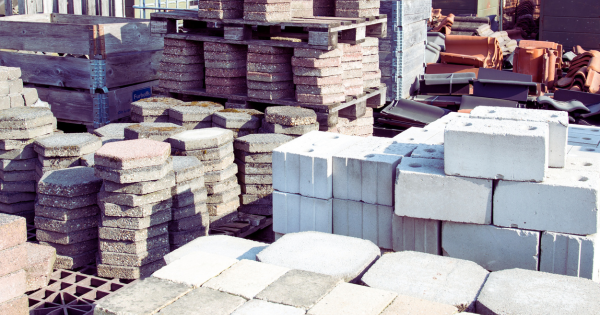Table of Contents
- Introduction
- Understanding Sustainable Construction
- History of Sustainable Construction
- Ancient Construction Techniques
- Modern Construction Materials vs. Ancient Building Materials
- Sustainable Construction Practices
- Sustainable Construction Materials
- Regulatory and Safety Factors
- Lessons from the Past for Modern Construction
Updated on 10/17/2024.
Introduction
The construction industry is a vital sector that plays a significant role in shaping the world around us. From residential homes to commercial buildings, infrastructure projects, and industrial facilities, construction projects have a profound impact on our daily lives. With the increasing focus on sustainability and environmental responsibility, the construction industry is evolving to adopt more eco-friendly practices and reduce its carbon footprint. In this article, we will explore the world of construction, from ancient techniques to modern sustainable practices, and discuss the regulatory and safety factors that shape the industry.
Related: What is Sustainable Construction?
Fill out the form below for a free trial of our data.
Understanding Sustainable Construction
Sustainable construction is a holistic approach to building that considers the environmental, social, and economic impacts of a construction project. It involves designing, constructing, and operating buildings in a way that minimizes harm to the environment and promotes the well-being of occupants and the community. Sustainable construction is not just about using eco-friendly materials, but also about creating buildings that are energy-efficient, water-efficient, and provide a healthy indoor environment. This comprehensive approach ensures that construction projects not only meet the needs of the present but also do not compromise the ability of future generations to meet their own needs.
History of Sustainable Construction
The concept of sustainable construction has been around for decades, but it has gained significant attention in recent years due to growing concerns about climate change, resource depletion, and environmental degradation. In the 1960s and 1970s, architects and builders began to experiment with sustainable building techniques, such as using solar panels and recycled materials. However, it wasn’t until the 1990s that sustainable construction started to gain mainstream acceptance, with the establishment of organizations such as the U.S. Green Building Council (USGBC) and the International Organization for Standardization (ISO). These organizations have played a crucial role in promoting sustainable construction practices and setting standards for green building.
Ancient Construction Techniques and Building Materials

Construction has been an integral part of human civilization for thousands of years. Ancient civilizations such as the Egyptians, Greeks, and Romans developed innovative construction techniques that allowed them to build structures that have stood the test of time. From the use of stone and brick to the development of arches and domes, ancient construction techniques laid the foundation for modern construction practices. For example, the ancient Egyptians used limestone and granite to build the Great Pyramids, while the Romans developed the use of concrete to build structures such as the Pantheon. These ancient techniques not only demonstrate the ingenuity and skill of our ancestors but also provide valuable lessons for modern construction practices.
Related: How Technology Can Help You Find New Projects.
Ancient builders created many edifices that are standing today. Portions of Italy’s Appian Way (312 BC) road are still in use. Then, as now, concrete was a material widely used for built-to-last structures. Scientists are examining sustainable construction options and hoping to unlock the secrets of earlier civilizations’ construction materials.
Related: Sustainable Building Materials: Keeping Your Jobsite Eco-Friendly.
Forbes says climate change, traffic, and heavier transportation vehicles are partial causes of roadway deterioration in our country. But you’ll see free-standing concrete structures in historical harbors that have been pounded by climate, wind, and seawater for over 2,000 years. Ancient cultures’ recipes for construction materials may have ingredients we can use for environmentally safer and more sustainable construction.
Scientists and Honduran masons analyzed materials used to build Mayan temples and statues. The structures have survived over 1,000 years, despite the humidity and heat of Honduras. They found tree extracts mixed with lime contributed to an extremely durable concrete/plaster building material. “Scientists… saw Mayan plaster was able to mimic sturdy, natural structures like seashells and sea urchin spines and borrow some of their toughness.”
Related: 5 Traits of Excellent Construction Project Managers.
Modern Construction Materials vs. Ancient Building Materials

Modern concrete has a lifespan of 50-100 years. Using reverse engineering protocols, scientists analyzed ancient construction materials and learned the Romans’ concrete mixture was developed like ours but some of the ingredients seemingly gave it longer life: beer, rice, tree bark, urine, and volcanic ash. They suspected these add-ins bring “healing” properties to the mixture that mend cracks or even cause concrete to become stronger, not weaker, over time.
- Massachusetts civil and environmental engineer Admir Masik published a study concluding chunks of burnt limestone in the concrete (which they thought was simply an example of bad mixing) interacted with volcanic sand and gravel to create a self-repairing chemical reaction that filled-in damaged sections.
- Utah geologist Marie Jackson suspects volcanic materials are key. The naturally reactive material makes concrete so well-designed that it sustains itself.
Related: How Can Construction Industry Leaders Encourage Sustainable Development?
Sustainable Construction Practices and Energy Efficiency
Sustainable construction practices are becoming increasingly important as the industry seeks to reduce its environmental impact. From using eco-friendly building materials to implementing energy-efficient systems, sustainable construction practices aim to minimize the carbon footprint of construction projects. For example, using recycled materials, such as reclaimed wood and recycled glass, can reduce waste and minimize the demand for raw materials. Additionally, incorporating green roofs and walls into building design can help to reduce energy consumption and improve air quality. By adopting sustainable construction practices, the industry can reduce its environmental impact and create buildings that are not only functional but also environmentally responsible.
Building Materials and Resources
Sustainable construction relies heavily on the use of eco-friendly building materials and resources. These materials are sourced from sustainable suppliers, have low embodied energy, and can be recycled or reused at the end of their life cycle. Some examples of sustainable building materials include recycled glass and plastic, reclaimed wood, low-VOC (volatile organic compound) paints, sustainable insulation materials, and locally sourced materials. By choosing these materials, construction projects can significantly reduce their environmental impact and contribute to a more sustainable future.
Energy and Water Efficiency
Energy and water efficiency are critical components of sustainable construction. Buildings can be designed to minimize energy consumption through the use of energy-efficient HVAC systems, solar panels and wind turbines, insulation and weatherstripping, and energy-efficient lighting and appliances. These measures not only reduce the environmental impact of buildings but also result in significant cost savings over time.
Water efficiency can be achieved through the use of low-flow showerheads and toilets, greywater reuse systems, and rainwater harvesting systems. These technologies help to conserve water resources and reduce the strain on municipal water supplies. By incorporating energy and water-efficient systems into building designs, sustainable construction projects can create more resilient and resource-efficient buildings.
Indoor and Environmental Quality
Sustainable construction also prioritizes indoor and environmental quality. This can be achieved through natural ventilation and daylighting, non-toxic and low-VOC materials, air filtration systems, and access to natural outdoor spaces. These elements contribute to a healthier indoor environment, improving the well-being and productivity of building occupants. By focusing on indoor and environmental quality, sustainable construction projects can create spaces that are not only environmentally friendly but also promote the health and well-being of the people who use them.
Related: Wind Energy Blows Past Coal: A New Era of Clean Power.
Sustainable Construction Materials
Ancient engineers often used locally-sourced materials like stone, wood, and mud. These are renewable and biodegradable, making them more sustainable than materials like concrete and steel. Utilizing sustainable construction materials was paramount in the ancient world and is even more important in our modern era. Some modern eco-friendly materials include:
- Hempcrete, an eco-friendly construction material made from the stalks of the hemp plant
- Recycled steel
- Reclaimed wood
- Recycled glass
- Aerated concrete
Sustainable building materials offer a pathway towards environmentally responsible construction practices, promoting resource conservation and reducing carbon emissions. These options offer durability, energy efficiency, and aesthetic appeal. By embracing sustainable building materials, construction projects can contribute to a greener future while creating healthy and comfortable living spaces for future generations.
Read more about sustainable construction materials.
Regulatory and Safety Factors in the Construction Industry

The construction industry is heavily regulated, with numerous laws and regulations governing safety, environmental impact, and building codes. For example, the Occupational Safety and Health Administration (OSHA) sets standards for workplace safety, while the Environmental Protection Agency (EPA) regulates the use of hazardous materials. Building codes, such as the International Building Code (IBC), govern the design and construction of buildings to ensure public safety. Additionally, regulatory bodies such as the National Institute of Building Sciences (NIBS) provide guidelines for sustainable construction practices. By understanding and complying with these regulatory and safety factors, construction companies can ensure that their projects are safe, sustainable, and compliant with industry standards. See 3 factors for construction jobsite safety.
Related: What May Surprise You About PPE and Construction Safety.
Lessons from the Past for Modern Construction

The construction industry can learn valuable lessons from the past. From the use of ancient construction techniques to the development of modern sustainable practices, the industry can draw on a rich history of innovation and experimentation. For example, the use of traditional building materials, such as wood and stone, can provide valuable insights into sustainable construction practices. Additionally, the study of ancient structures, such as the Great Pyramids and the Colosseum, can provide valuable lessons in durability and longevity. By learning from the past, the construction industry can create buildings that are not only functional and sustainable but also timeless and enduring.
Check out Construction Monitor for early-stage building, pool, and solar permit information.
Fill out the form below for a free trial of our data.

